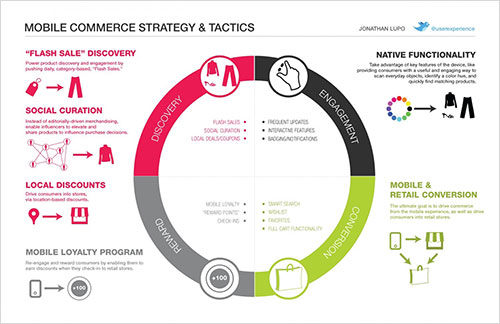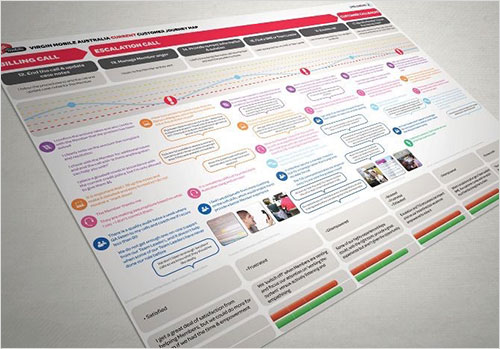All You Need To Know About Customer Journey Mapping
“Stories have defined our world. They have been with us since the dawn of communication, from cave walls to the tall tales recounted around fires. They have continued to evolve, with their purpose remaining the same: to entertain, to share common experiences, to teach and to pass on traditions.”
Francisco Inchauste wrote those words on this article back in 2010. His post is just one of many on this website that talk about the power of storytelling to engage users.
But storytelling is not just a tool to engage users. It is also a powerful way to teach organizations more about their customers.
Most organizations are reasonably good at gathering data on their users. But data often fails to communicate the frustrations and experiences of customers. A story can do that, and one of the best storytelling tools in business is the customer journey map.
What Is A Customer Journey Map?
A customer journey map tells the story of the customer’s experience: from initial contact, through the process of engagement and into a long-term relationship.
It may focus on a particular part of the story or give an overview of the entire experience. What it always does is identify key interactions that the customer has with the organization. It talks about the user’s feelings, motivations and questions for each of these touchpoints.
It often provides a sense of the customer’s greater motivation. What do they wish to achieve, and what are their expectations of the organization?
A customer journey map takes many forms but typically appears as some type of infographic. Whatever its form, the goal is the same: to teach organizations more about their customers.

It will come as no surprise that marketers often use customer journey maps. But more and more digital professionals are adopting them, too.
Why You Should Create Customer Journey Maps
A customer journey map is a powerful tool.
If you are a designer, it will help you to understand the context of users. You will gain a clear picture of where the user has come from and what they are trying to achieve.
If you write copy, it will help you to understand what questions users have and how they are feeling.
It gives managers an overview of the customer’s experience. They will see how customers move through the sales funnel. This will help them to identify opportunities to enhance the experience. The map will show how enhanced customer service can differentiate the organization’s digital experience.
For the user experience designer, a customer journey map helps to identify gaps, points in the customer experience that are disjointed or painful. These might be:
- gaps between devices, when a user moves from one device to another;
- gaps between departments, where the user might get frustrated.
- gaps between channels (for example, where the experience of going from social media to the website could be better).
Most of all, a customer journey map puts the user front and center in the organization’s thinking. It shows how mobile, social media and the web have changed customer behavior. It demonstrates the need for the entire organization to adapt.
It encourages people across the organization to consider the user’s feelings, questions and needs. This is especially important with digital products and services.

With so many benefits, a customer journey map makes a lot of sense. But where do you start?
How To Research A Customer Journey Map
The process of creating a customer journey map has to begin with getting to know users.
Many organizations already have some information about users. In fact, you might meet resistance from those who feel that repeating this exercise would be a waste of time. This is why gathering existing research is a good start. Often, this research will be out of date or buried in a drawer somewhere.
By gathering existing research, you will see what the organization knows and how relevant that information is. This will placate those who are resistant, while potentially saving you some research effort.
There are two types of research: analytical and anecdotal.
Analytical Research
You can turn to many sources for data about users. The most obvious is website analytics, which provide a lot of information on where users have come from and what they are trying to achieve. It will also help you to identify points in the process where they have given up.
But be careful. Analytics are easy to read wrong. For example, don’t presume that a lot of clicks or long dwell times are a sign of a happy user. They could indicate that they are lost or confused.
Social media are also a useful source of data. Tools such as SocialMention tracks mentions of a brand and whether those mentions are positive or negative.

Search data also provides valuable insight into what users are looking for, revealing whether your existing website is providing the right information.
Finally, consider running a survey. This will help you build a more detailed picture of users’ questions, feelings and motivations.
Anecdotal Research
Although data can build a compelling case, it does not tell a story by itself. For that, you need anecdotes of user experiences. You can get these by speaking to users in interviews or on social media.
You will also discover that users volunteer experiences by posting them to social media. Be sure to collect these mentions because they will be a useful reference point in your final map.
Speaking to front-line staff who interact with customers daily, such as those in support and sales, is another useful way to understand customer needs.
The detail of the research will be constrained by your time and budget. If your organization has many different user groups, then creating detailed customer journeys for each might be hard. Therefore, focus the research on primary audiences.
You can make educated guesses about the customer journeys for secondary audiences. Do this by workshopping solutions with front-line staff and other internal stakeholders. Although this “quick and dirty” approach will not be as accurate, it is still better than nothing.
Be careful to make clear what has research behind it and what does not. Making many decisions based on assumptions is dangerous. Once management sees the benefits of research, they will be willing to spend more time on it.
With your research complete, it is time to create the map.
Presenting Your Customer Journey Map
As mentioned, there is no right or wrong way to produce a customer journey map. Normally, it will be some form of infographic with a timeline of the user’s experience. But it could just as easily be a storyboard or even a video.

The goal is to ensure that the user’s story remains front and center in people’s minds. Get a designer to produce the graphic to ensure it is as clear as possible and grabs people’s attention.
Whatever its form, the map should contain both statistical and anecdotal evidence. It should highlight users’ needs, questions and feelings throughout their interaction with the organization.

Don’t make it too complex. It is easy to get caught up in the multiple routes a user might take. This will just muddy the story.
The graphic is not meant to map every aspect of the customer’s experience. Rather, it should tell a simple story to focus people’s attention on the customer’s needs.
Think of the customer journey map as a poster pinned to the office wall. At a glance, people should be able to see the key touchpoints that a user passes through. It should remind them that the customer’s needs must always be at the forefront of their thinking.

There are so many ways to approach the customer journey map. I would love to hear of any good examples you have seen. Please post them in the comments below.
Further Reading
- Better User Experience With Storytelling
- Quick Course On Effective Website Copywriting
- User Experience Revolution
- Recent Trends In Storytelling








